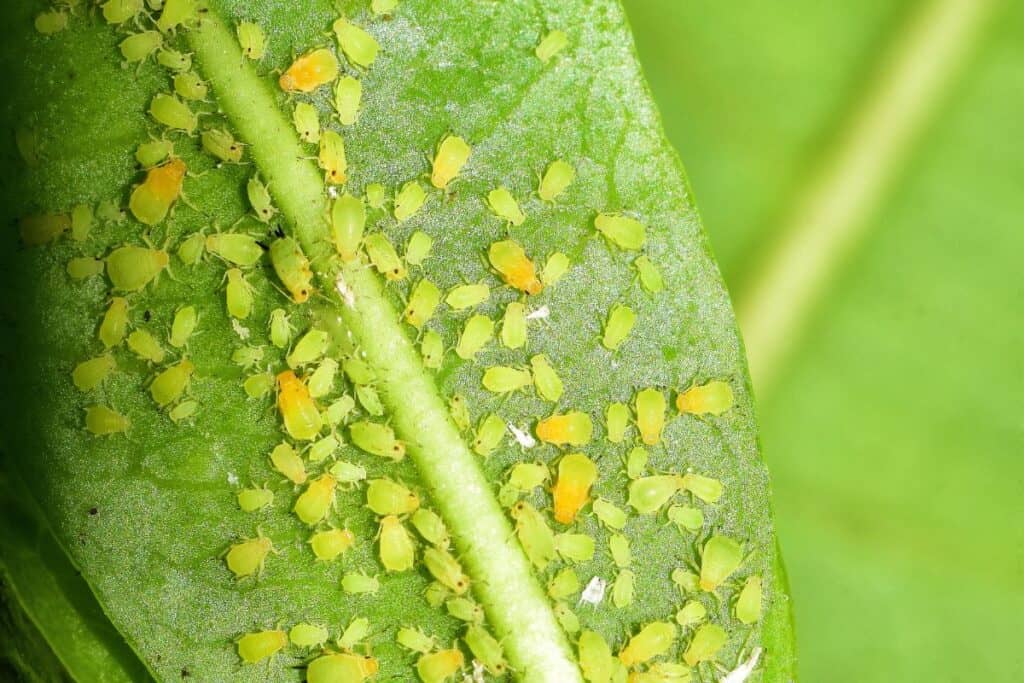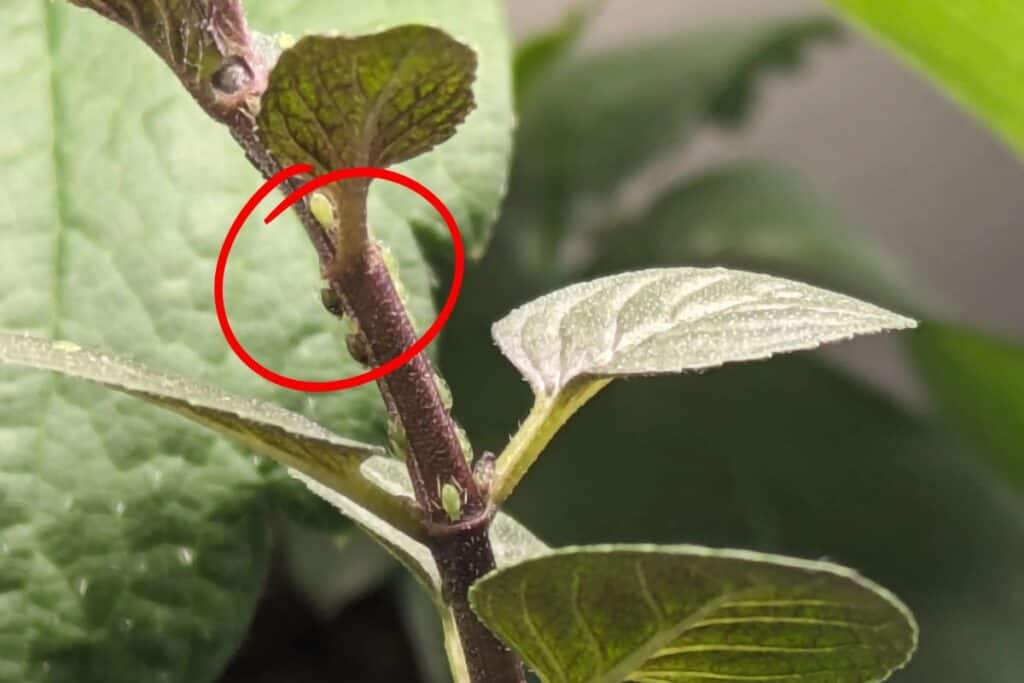Aphids can wreak havoc on your indoor plants. Learn how to spot them early, treat them safely, and prevent future infestations with this expert guide.
🌿 What Are Aphids and Why They’re a Problem
Aphids are tiny, soft-bodied insects that feed on plant sap, causing distorted leaves, sticky residue (aka honeydew), and even mold. They multiply quickly and often go unnoticed—especially when they hide on the underside of leaves or cluster around new growth.

🔍 How to Spot Aphids Early
Catching aphids before they spread is key. Here’s what to look for:
- New growth distortion: Aphids love tender stems and buds.
- Leaf undersides: Flip leaves to find hidden clusters.
- Sticky leaves or ants: Aphids excrete honeydew, which attracts ants and encourages mold.
🧴 Aphid Treatment Options That Actually Work
1. Diluted Alcohol Spray (1:3 ratio with water)
- Kills aphids on contact
- Best for hardy plants like pothos, jade, and snake plants
- Avoid direct sunlight after spraying
- Always test on one leaf first
2. Neem Oil or Horticultural Oil (0.5–1% dilution)
- Smothers aphids and their eggs
- Offers residual protection for several days
- Apply in the evening and wipe excess after a few hours
- Safe for sensitive foliage like Calathea and Maranta when diluted properly
🧠 Pro Tip:
Always spray under the leaves—aphids hide there and lay eggs. Skipping this step means they’ll bounce back fast.

🧼 Bonus Tactics for Persistent Infestations
- Manual removal: Use a damp cloth or soft brush to gently wipe aphids off.
- Rinse with water: A strong stream can dislodge them (especially outdoors or in the shower).
- Introduce beneficial insects: Ladybugs and lacewings are natural predators—great for greenhouses or enclosed setups.
🚫 How to Prevent Aphids Long-Term
- Quarantine new plants for 1–2 weeks before introducing them
- Inspect weekly, especially during warm, humid months
- Avoid over-fertilizing—aphids love nitrogen-rich, tender growth
- Improve airflow to discourage pests from settling in
🌱 Final Thoughts
Aphids may be tiny, but they’re persistent. With the right mix of targeted treatment, visual inspection, and preventive care, you can keep your indoor jungle thriving.
